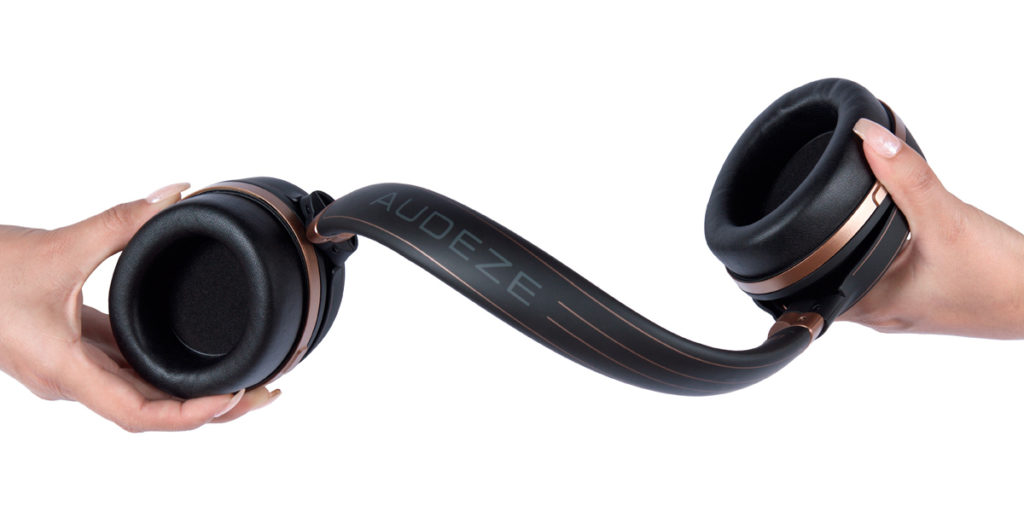From its Indiegogo campaign to its release, the Audeze Mobius has been talking a lot of talk. Today, I’m taking a break from predatory loot-crate-laden Android games to bring you an analysis of Audeze’s audacious entry into the gaming market.
Audeze Mobius Review
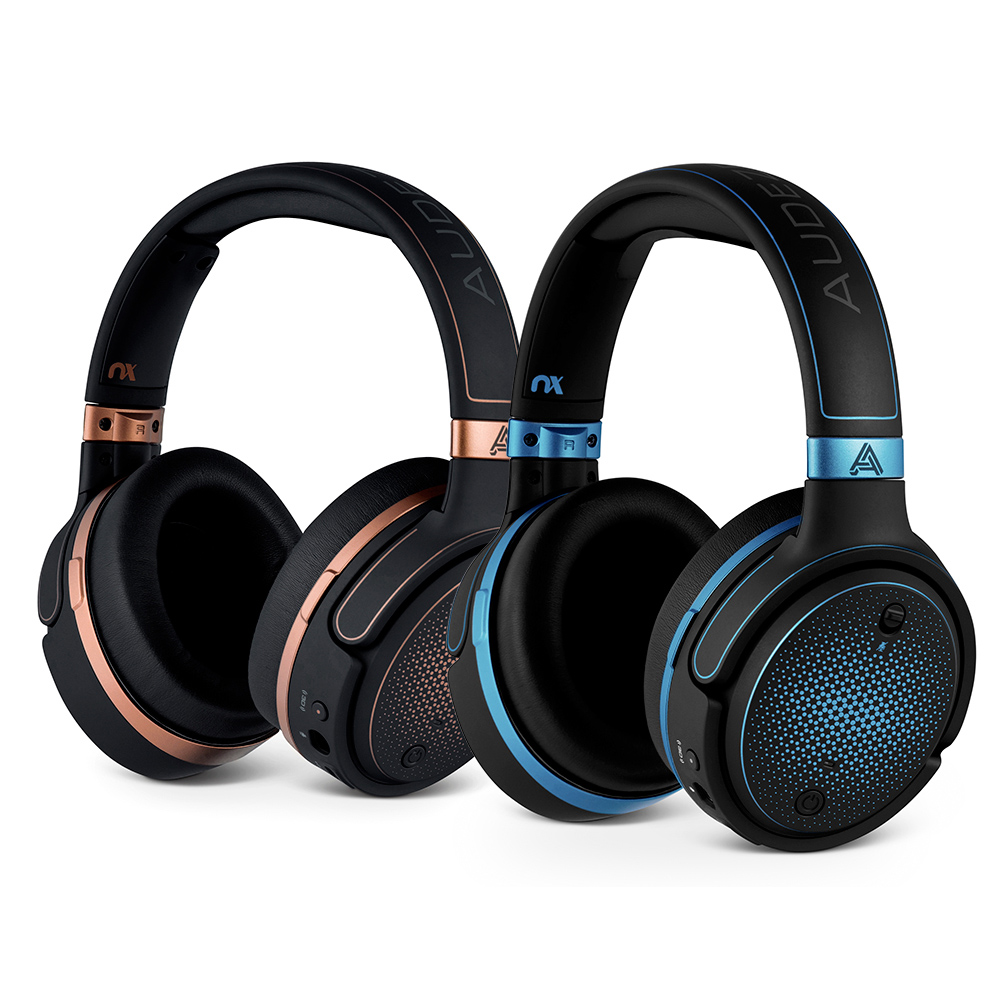
I hopped on the head-tracking 3D audio bandwagon in 2016 when Ossic launched their kickstarter campaign. Therefore, you can imagine I felt pretty bummed out in March when they announced that the Ossic X would not be shipping. It had been over ten years since Beyerdynamic had released their Headzone Pro. And yet, we still weren’t seeing anyone seamlessly integrate that kind of technology into a pair of headphones. I began to wonder if I was really living in the future or not.
Then I heard about the Mobius. A new, crowd-sourced (sigh) set of headphones that would finally deliver the head tracking virtual experience that I had been looking for. Combining the power of Waves NX and the quality sound of a pair of Audezes, the Mobius seemed too big to fail. I let myself become optimistic one final time.
Months went by before a box arrived and I could sit down to write about some first impressions. I started framing my review as I would any other. I soon realized, though, that it may be difficult to approach such a feature-heavy headset the same as I would any other. Its software allows ample customization option. It can be used via a standard 3.5mm headphone cable or USB Audio. On top of all this, there’s an option for Bluetooth, a convenient feature not often seen with planar magnetic headphones. So here is my long-winded review; I hope it answers any questions you may have.
Fit
IMHO everything about the Mobius is comfortable. Their cups do not seem as large as other Audeze over-ears, but they still manage to completely cover my ears. Their foam pads employ a soft texture, but remain thick enough to where my ears still enjoy a little space. Adjusting the headband length comes across as pretty standard. I actually like that I need to extend the headphones down a small amount in order for them to fit my head. I have an average-sized head, and it’s usually not a good sign for people with smaller heads when I don’t have to do any adjusting.
The headphones have a little clamp to them, and it’s great. They provide a nice secure grip without feeling terribly tight or uncomfortable. This may have to do with the elasticity of their headband. A vertical hinge allows the cups to swivel 90° and firmly holds whatever position you set them at.
If there is a singular issue concerning the Mobius’ comfort, I would say it’s the temperature. Their encompassing seal provides great isolation and immersion, but it comes at a cost. For long sessions, you may start to feel the heat after an hour or more of gameplay. It makes matters worse when running them via their USB-C connection or using them immediately after a charge. The battery heats up on the left ear, contributing to the overall temperature.
I give them a pass on the heat issue. Considering how much power these headphones require, they actually keep it pretty cool. For the same reasons, I’m also surprised by how light they feel. They weigh less than the majority of planar magnetic headphones on the market, while still being technically more-involved.
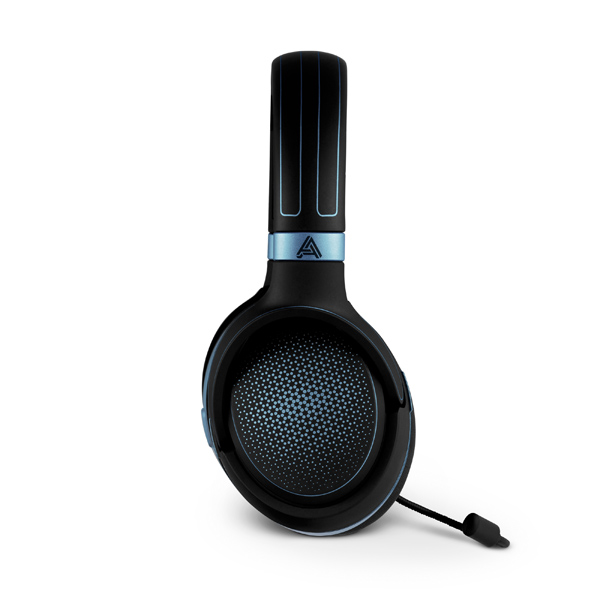
Design and Features
I mostly don’t care what headphones look like. I think the Audeze Mobius looks great. However, I’m also fully aware that appearance is a subjective matter, and I never really wanna try and speak for everyone in this department. I have the “Team Copper” Mobius and they sport a purrrdy matte, rubbery/grippy smooth texture. They don’t look like they’ve recently graduated clown school like many other condescendingly G4M3r-targeted designs.
All of the buttons sit within easy-reaching distance on the left side, and feel satisfying to use. On the outside of the left ear cup, you’ll find the power button that doubles as a play/pause button (when the Mobius is in Bluetooth mode). Double-pressing this button will also set the Mobius into pairing mode. A mic mute on/off switch also sits on the left face of the earcup. On the front facing side of the left ear, the 3D button allows you to change 3D settings and calibrate your positioning.
Headphone and mic volume dials exist on the back side of the left ear that double as buttons, allowing them additional functions. If you push and scroll the mic volume wheel, you can toggle through game-oriented EQ profiles. There are seven of them altogether (Flat, Default, Footsteps, Ballistics, Music, Racing, RPG), but I found myself most at home with the “flat” setting. If you long-press the same putting you can also shuffle through the playback mode settings (2-channel, 7.1-channel, hi-res). Yes, this all of these commands share one button on the Mobius.
The headphone wheel controls headphone volume. If listening on a phone, it overrides the phone’s volume controls, as it also changes a PC’s volume. On Bluetooth mode, pressing and scrolling simultaneously will skip tracks in whichever direction you send it. If your headphones are getting too hot on USB mode, you can long-press this button to turn charging off while receiving audio from a PC.
The mic sounds great, and is conveniently removable. You may find it unnecessary when using the Mobius just for music or watching a film. There is also an optional aux cable that can be used to run audio signal straight into the Mobius. Unfortunately, the aux cable requires the Mobius to be charged and powered-on in order to function.
![]()
3D EXPERIENCE
It would be an understatement to say I was excited to see how the Mobius tackled surround sound simulation with its head tracking 3D mode. Unlike others who have tried this feature, installing the software and drivers on a PC running Windows 10 was a quick and painless. The software installs quickly and can be run immediately.
When I ran the Audeze HQ program for the first time, I was impressed by the virtual head that mirrors your movement. There wasn’t much lagtime between my head movement and the Lawnmower Man staring back at me. The cyberskull is actually useful in that it confirms you’ve calibrated the Mobius correctly.
To make sure the 3D space simulation is most accurate, the PC software allows you to enter your head measurements. This ensured a full HRTF (head-related transfer function) experience. Thus, the most difficult part of setting up the Mobius was going to the dollar store to get soft measuring tape. The software also gives you the ability to alter the eq profiles and mix in how much room emulation (impulse response reverb) you want.
Stereo
In Paladins for PC and Bloodborne on my PS4, I tested the 3D room emulation on stereo mixes. It’s important to note that the PS4 does support USB audio but will not output surround or hi-res to the Mobius. In my experience, using 3D mode for stereo (two-channel) gaming was still pretty exciting. It didn’t bring any extra aural information to me, but I still felt more connected to the environment in front of me.
To get a feel for how the Mobius could be used as a Bluetooth headphone, I took the Mobius on my daily commute. I removed the mic from the headset as to not draw too much attention to myself on public transportation. However, I did slip the mic in my pocket in case I needed to take a call.
I’d suggest that you turn room emulation off before leaving the house, and set the cans to “3D auto”. In this mode, the headset slowly adapts the calibration to have the virtual speakers that smoothly adjust to stay in front of you. 3D mode is fun for listening to music, but I ended up setting them to “3D off” after a while just to appreciate my music the way it was mixed.
Surround
Testing the surround functionality was also easier than expected. Setting VLC media player up for multi-channel output was the biggest struggle, but it wasn’t hard with some minimal-effort googling. Also, VLC isn’t necessary to appreciate the surround simulation, I just wanted to watch surround calibration test videos for the sake of the review. The Netflix standalone app required no setup for 7.1 functionality, nor did any game I tried with them. In these cases, the surround sound just worked automatically.
On my PC I ran through a few different games including Resident Evil: Beginning Hour, Fallout 4, and the Witcher 3. I realized quickly that the best way to appreciate the 3D surround was to play in first person. Resident Evil was terrifying. With the room mix turned up, the level of immersion was no joke. I like to test headphones with Beginning Hour since it’s free and allows you to set “dynamic range” to large. Footsteps mode was, for whatever reason, the scariest way to experience this horror title.
Something I did notice was that since developers apparently do not make their surround channels as busy as their front two, there was still noticeable weight in the sound that was projected from in front of me. Which is to say, if I turned my head clockwise, I wouldn’t be hearing all that much in my right ear. This has much less to do with the Mobius, and more to do with how an individual studio approaches surround mixing.
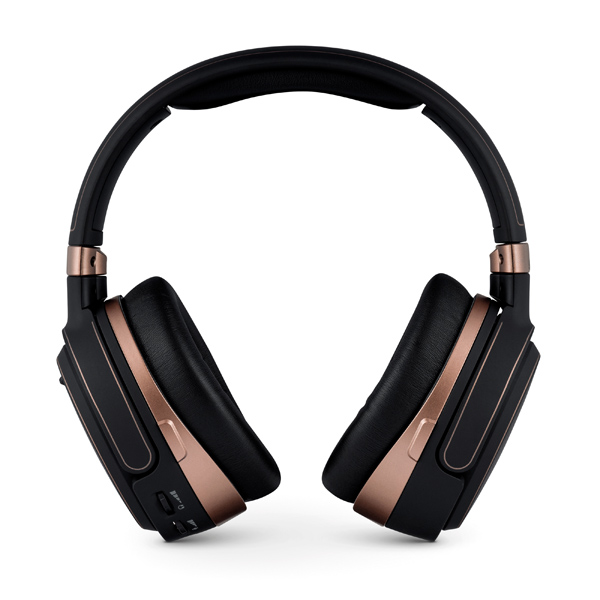
The Sound
Audiophiles: I know you; I know what you are thinking. You saw the size of my “features” section, and wanted to stop reading. There’s no way a headset with this many features can deliver the kind of sound quality worthy of the Audeze name.
Hah, nope. They are awesome. On the “Flat” and “Default” profiles (which seemed to me like the best two to judge the drivers) the sound is comprehensive, detailed, and clean. To be quite honest, it wouldn’t be a stretch to say that the Mobius is worth the $399 price tag without any of the head tracking or Waves NX integration.
Lows
The lows appear solid and strong. The planar magnetic drivers in the Mobius deliver an amazing boost to firearms and explosions. I can almost feel bullet impacts with the low frequency reproduction of this headset. For music, the bass looms large and visible – and perfectly balanced, relative to the rest of the sound.
Mids
The mids seem appropriately pronounced for headphones that many will be watching films on. Any games or entertainment with dialogue will be enhanced from the amazing clarity in the mids. The center channel (which nearly always has the dialogue in surround sound films) remains distinctly pronounced despite it sharing a space with the left and right emulated speakers. For music, again, the sound comes across as amazing.
Highs
The highs sound bright and detailed, and really add atmosphere to these cans. Even running in Bluetooth mode, this high-frequency content brilliantly pronounces itself. There is total clarity in this range, solidifying the driver’s impression as balanced and complete. There is a striking, quick delivery of the highs. Although it may sound cliche, with the Mobius on my head, I really can’t believe my ears.
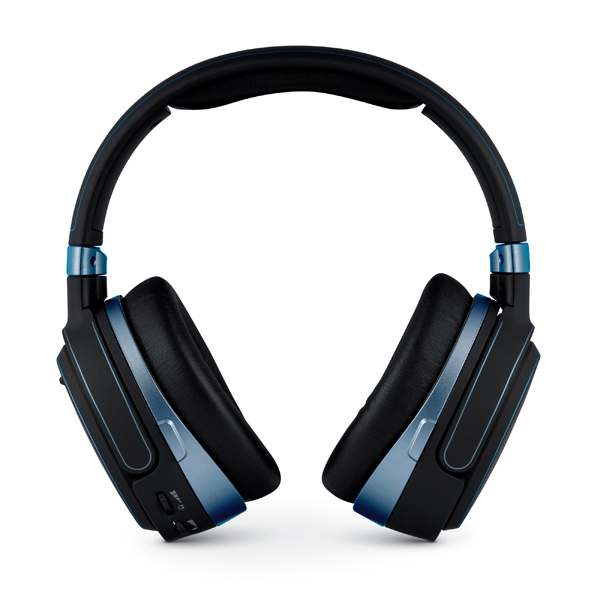
Final Thoughts
From a distance, you might be tempted to accuse the Mobius of having gimmicks. Admittedly, that seems a fair argument to make as an outsider. Fortunately for Audeze, the minute you try the headset any such claim becomes unarguably invalid. In the Mobius, everything works as intended; Audeze delivers everything as-promised. This may be the first time I haven’t been let down in some way by head-tracking headphones. On top of superb functionality and endless customization, setup remains downright breezy. Considering that the quality of the drivers alone warrants the price tag, I feel obligated to inform you that the Mobius is taking home five out of five skulls.

TL;DR Takeaway
PROS
- Phenomenal Performance via Audeze planar magnetic drivers featuring FAZOR technology for true sound reproduction
- Painless setup, easy customization, no bugs or issues on Windows 10
- Versatility in playback options. USB, AUX, Bluetooth (SBC, AAC, LDAC)
- Versatility in playback functions. 3D Manual, 3D Auto, 3D off, 7.1, 2-channel, hi-res
- Comfortable
- Quick Charging via USB C
- The best surround headphones in existence
- Impressive head-tracking
- Waves NX impulse response reverb and HRTF creation provides unparalleled immersion
- Includes one year warranty
CONS
- Button multi-functionality takes a little practice, encouraging you to read the manual
- Less than 15 hours of battery life using Bluetooth and 3D mode
- Requires power for AUX use
- Left speaker heats up when charging
Already have the Mobius? Here’s a list of games that support multi-channel audio that I found useful for testing.
For all of you nerds, here’s some science behind HRTF concepts.
Get the Audeze Mobius for the best price here:

